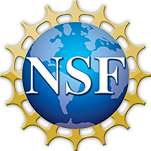Abstract
In August 2014, I gave an oral presentation at the International Society for Microbial Ecology (ISME) 15th International Symposium in Seoul, South Korea highlighting interesting findings from work looking at the active autotrophic community of the subseafloor. My talk was part of the session entitled “Microbiomes of marine ecosystems: key functions from the cryosphere to the deep biosphere” which hosted an array of talks discussing various aspects of extreme life. Subseafloor communities have the potential to influence ocean biogeochemistry and, in particular, the chemolithoautotrophic populations could potentially provide a large amount of new production to the deep sea. Yet the contribution of and the mechanisms behind the different redox-driven autotrophic metabolisms and the extent of the carbon produced from these metabolic reactions have not been well described. Our findings, using both ‘omics and RNA-SIP techniques, show the presence of an active and metabolically diverse subseafloor chemolithoautotrophic community. Our RNA-SIP results also show there are specific taxonomic groups and autrophic metabolisms that dominate at the different temperatures of the subseafloor. Thanks to the support of C-DEBI, I was able to present this work at the high profile international ISME conference and as a result was also able to learn about other exciting new research scientists are doing to further explore subseafloor life.

